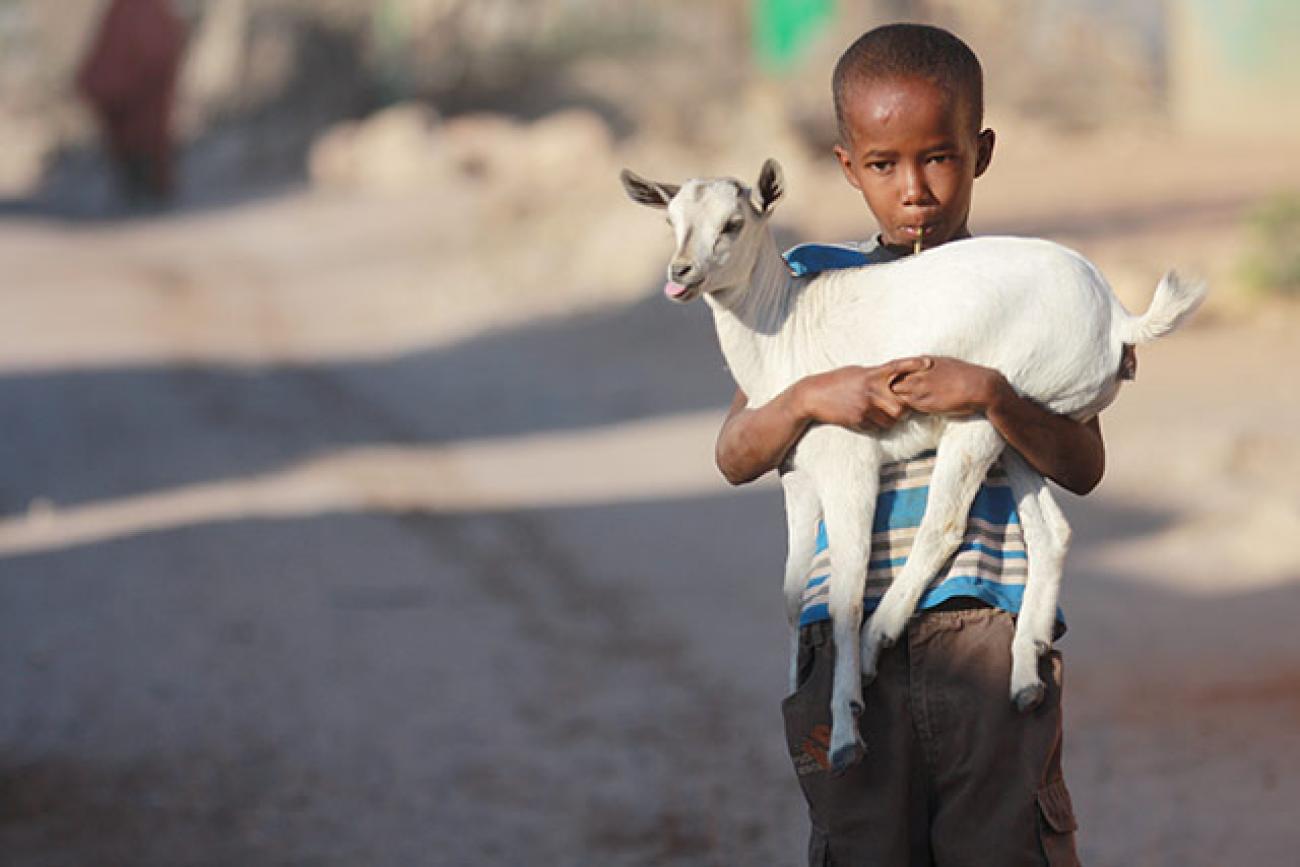Over one million people in Somalia face acute food insecurity as food crisis worsens

The gradual recovery and gains made since the end of the famine in 2012 are being lost
The gradual recovery and gains made since the end of the famine in 2012 are being lost as poor rains, conflict, trade disruptions and reduced humanitarian assistance led to a worsening of the food security situation across Somalia. Acute malnutrition increased in many parts of the country, particularly among children. The situation is likely to continue deteriorating further until the start of the Deyr rains in October.
The latest findings from a joint assessment by the Food Security and Nutrition Analysis Unit for Somalia (FSNAU), a project managed by Food and Agriculture Organization (FAO) of the United Nations, and the Famine Early Warning Systems Network (FEWS NET), a project funded by the United States Agency for International Development (USAID), and other partners indicate that an estimated 1,025,000 people will be in Crisis and Emergency (IPC Phases 3 and 4). This figure represents a 20 percent increase since January 2014. Internally displaced persons (IDPs) continue to constitute a majority (62%) of the people in Crisis and Emergency (IPC Phases 3 and 4), followed by rural (27%) and urban (11%) populations.
Recent nutrition survey results conducted across the country also indicate that an estimated 218,000 children under the age of five are acutely malnourished (nearly one in seven children under five) – a seven percent increase since January 2014. This figure includes 43,800 severely malnourished children who face an even higher risk of morbidity and death. Critical levels of acute malnutrition (Global Acute Malnutrition rates exceeding 15%) were found in 21 out of 50 population groups surveyed. Morbidity, poor infant and young child feeding practices and inadequate humanitarian assistance are among the main contributing factors of malnutrition in Somalia.
As a result of delayed and erratic rainfall, the Gu 2014 cereal harvest in July/August is estimated to be 37 percent below the long-term average and 28 percent below the five-year average. The poor rains have also contributed to water shortages, poor livestock performance and reduced access to milk in several pastoral areas, particularly in parts of the Northeast and the Gedo region of Southern Somalia. Trade disruption and reduced access to seasonal agricultural employment have also exacerbated the food insecurity situation in urban areas that came under government control following the military offensive against insurgents in March 2014. In these areas, access roads remain under insurgent control and trade flow is largely blocked, resulting in sharp increases in staple food prices. Cereal prices have quadrupled in Wajid (Bakool) and doubled in Hudur town (Bakool), Middle Shabelle and Hiraan (Buloburte district) regions between January and July/August 2014.
The populations in Emergency and Crisis (IPC Phases 4 and 3) require urgent lifesaving humanitarian assistance and livelihood support between now and December 2014 to help meet immediate food needs, including urgent nutrition and health support for the acutely malnourished, particularly children. Additional interventions will be required to protect livelihoods and build the resilience of communities against future shocks.
The food security situation of over 2.1 million additional people remains fragile and is classified as Stressed (IPC Phase 2). This group of households may struggle to meet their minimal food requirements through the end of the year, and they remain highly vulnerable to shocks that could push them back to food security crisis if no appropriate support is provided.
Link to original story


